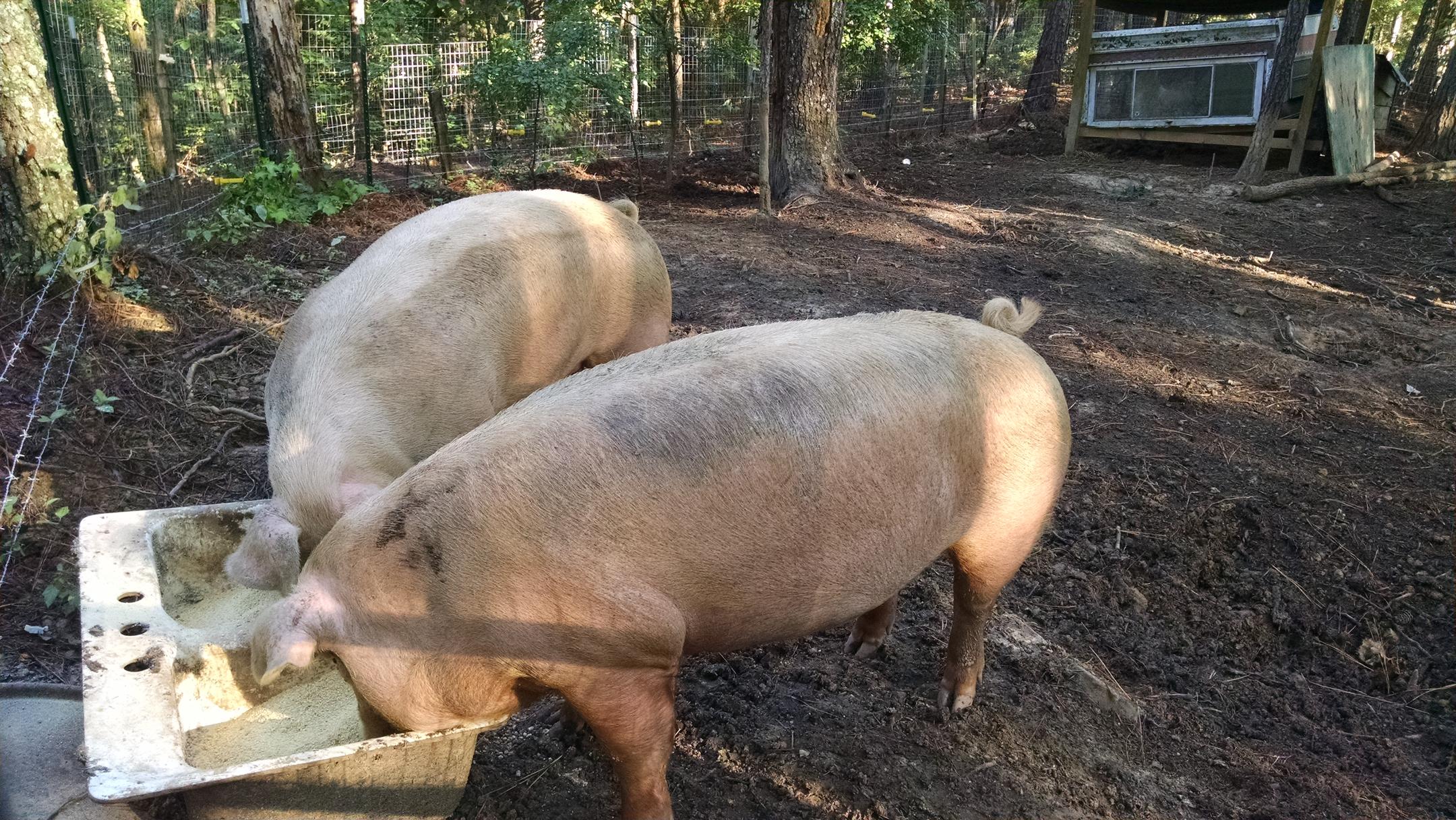Email a copy of 'From Piglets to Bacon- Part 4, by Animal House' to a friend
8 Comments
- Ad USA Berkey Water Filters - Start Drinking Purified Water Today!#1 Trusted Gravity Water Purification System! Start Drinking Purified Water now with a Berkey water filtration system. Find systems, replacement filters, parts and more here.
- Ad Follow the Author Don Shift Basic SHTF Radio: A cop's brief guide for understanding simple solutions for SHTF radio communicationIntimidated and don’t know where to start with radio? This book is the perfect guide to what options you have i.e. GMRS, CB, to ham and basic communication topics.


I’m curious about the shot placement used for the killing of these hogs.
In the past I have used a .22lr caliber single shot rifle with great effect. One shot into the brain and the animals falls and never get back up. A long bladed knife inserted under the neck back into the body cavity severs arteries and allows for a quick bleed out while the heart is still pumping.
Mike, Per guidance I received from the book and from others, between the eyes or an inch above. Others have said under the ear towards the brain. The first hog was good shot but the second hog not so much.
The one hog butchering I was part was a lot like what you described. A bit of feed on the ground to keep the hog busy, .22LR rifle shot from a couple feet away to the brain from the front and a quick knife to the front of the neck towards the body…then watched the little piglets drinking the fresh blood…from big guy on the block to food for the little guys in a couple of seconds! Butchering a still warm hog did not seem right, but my hands were well moisturized by the end with grease!
It is best to butcher hogs before they get to the 400 pound stage…at that weight they can be very dangerous. We always seperated the hog to be butchered from the rest because they are smart and once they see one being killed, they can be difficult to handle when their turn comes. A .22 properly used in the brain will work on smaller hogs, larger ones, not always.
Good article
I am really impressed with your work and determination. Great Job! We raised pigs for quite a few years. The first year we decided to butcher them ourselves as we had always processed all our wild game and the chickens we raised. We didn’t have a tractor so my husband built a tripod and we used a come-a-long to pull it up. We soon discovered just how tough the pigs skin is! After that experience we decided to have our pigs processed. So instead of raising 2 we raised 4 and sold 2 and 1/2 pigs to pay for the processing and some money for our kids to help them learn the value of hard work. When my husband shot the first pig the other one just looked up and then continued to eat. We started training the pigs about a week before taking them to be processed to climb a ramp into the back of our trailer by putting their food up in the trailer. They then didn’t mind climbing up it and it was a rather simple job to shut down the trailer with them inside. Also when wrapping meat we double wrap with plastic wrap getting all the air out of it that is possible. Then we wrap it with butcher paper. This way we have had meat in our freezer for 2 to 3 years and it has never gotten freezer burnt. Also if you wish to create more room in your freezer you can always unthaw the meat and then can it and it will be good as long as it stays sealed)for 5 -10 years.
a
In my limited experience, if you use lard for cooking, roughly 20 % of the dressed weight of the pig, it is worth raising and butchering pigs yourself, if you don’t you can buy the cuts on sale for about what it costs you to produce them. Not to say that for survival reasons, or for knowing what the pig was fed and how the meat was processed, you may well want to raise and process pigs. One major reason for raising pigs is the manure, they convert all of your organic wastes into a very good fertilizer in a few hours rather than months to compost.
Wow! I am so impressed by this lady! I don’t know if I could harvest my own pig meat, but fresh, delicious, organic bacon sounds delicious!
I failed to mentioned that we had the processors save out the ground pork and the pig fat (lard). We then made our own sausage and rendered the lard.